Visual automation builders excel at connecting simple A-to-B workflows, but they often break down when logic gets complex. They force operators into a rigid, click-and-drag grammar that struggles to express sophisticated ideas, turning powerful automation into a frustrating puzzle. This is why many teams are exploring Make alternatives that offer greater flexibility. Forrester (2023) reports that 55% of organizations are increasing their investment in automation platforms that offer greater developer and AI capabilities, recognizing the limitations of purely visual systems. For a deeper look at this shift, see our guide on AI workflow automation tools.
Hitting a ceiling with Make’s scenario limits and opaque pricing is a common frustration for growing teams. You need a platform that scales with your ambition, not one that penalizes it. This guide promises a clear path to finding an automation tool that fits your specific needs, whether you require enterprise-grade security, open-source customizability, or the sheer power of conversational AI. The solution isn't always another visual builder with a different UI.
The fastest way to build robust, multi-step automation is often by describing what you want in plain language. Unlike generic AI automation posts, this guide will show you real CodeWords workflows so you can see it in practice. We will explore platforms that transform your operational needs into functional workflows, helping you find the right language for your automation goals.
TL;DR: Best Make alternatives
- Growing Need for Flexibility: 55% of organizations are boosting investment in automation platforms with developer and AI features, moving beyond simple visual builders (Forrester, 2023).
- AI-Native vs. Visual: CodeWords uses a chat-native AI to build, test, and deploy workflows from plain language, bypassing the constraints of visual node-and-branch editors.
- Key Differentiators: Consider factors like open-source availability (n8n, Activepieces), developer-centric code steps (Pipedream), enterprise governance (Workato), or human-in-the-loop approvals (Relay).
What are the main reasons to seek a Make alternative?
The search for Make alternatives often begins when an organization's automation needs evolve beyond simple, linear scenarios. While Make is a capable tool for connecting apps, its visual-first paradigm can become a bottleneck as workflow complexity increases. The core issue is that a click-and-drag interface, no matter how intuitive, is a constrained language for expressing intricate logic, conditional branching, and error handling. As processes scale, managing dozens of interconnected visual modules becomes difficult.
Here's the deal: many teams hit a wall with pricing. Make’s operation-based model can lead to unpredictable costs, especially for high-volume workflows with many small steps. A single scenario might consume thousands of operations, making it hard to forecast expenses. According to a 2024 survey in Singapore, 63% of operations teams cited unpredictable costs as a primary barrier to scaling automation initiatives. This pushes teams toward platforms with more transparent, execution-based, or usage-based pricing that better aligns with value.
Furthermore, there is a growing demand for platforms that offer deeper integration with code and AI. Developers and technical operators need the ability to inject custom scripts (like Python or JavaScript) for data transformation or to call specialized APIs. You might think a no-code tool is sufficient, but for true operational leverage, you often need the precision of code. For example, a CodeWords user reduced their customer onboarding data validation time by 90% in two weeks by describing a complex validation sequence that the AI translated into a Python script within the workflow. This blend of low-floor accessibility and high-ceiling power is a key driver for seeking alternatives.
How does an AI-native builder differ from a visual one?
An AI-native automation builder like CodeWords represents a fundamental shift from building workflows to composing them. It's a powerful and accessible Make alternative, especially for non-technical users who can think in processes but not in visual diagrams. Instead of navigating complex visual builders with nodes and branches, users interact with an AI assistant, Cody, to build, test, and deploy automations using simple, natural language prompts. This chat-native interface drastically lowers the barrier to entry, allowing founders and operations managers to create their first useful workflow in minutes. The core philosophy is to translate user intent directly into a functional, reliable process.

The platform’s strength lies in its combination of simplicity and power. While the chat interface is intuitive, the underlying system generates actual code — providing more flexibility and expressiveness than typical drag-and-drop tools. With an extensive library of over 2,700 integrations, users can connect disparate systems to automate sophisticated cross-functional tasks. This approach is ideal for those who find visual builders constraining. It removes the need to learn a specific tool's UI, instead letting you focus on the logic of the problem you're trying to solve. That's not the full story: this method also accelerates debugging, as you can ask the AI to identify and fix errors in plain English.
CodeWords Workflow: Automated Lead Enrichment
Prompt: "When a new lead is created in Salesforce, find their LinkedIn profile URL, enrich their company data using Clearbit, and then create a new row in our 'Leads' Google Sheet with the name, email, company, and LinkedIn URL."
Output: A fully functional workflow is generated, tested, and deployed.
Impact: Reduces manual lead research time from 15 minutes per lead to under 30 seconds.
The usage-based pricing model is flexible, but you will need to estimate costs based on your specific workflow complexity and frequency. While the platform is designed to be accessible, highly customized enterprise workflows may still require some technical oversight.
Which Make alternatives are best for no-code users?
For teams prioritizing ease of use and a vast library of pre-built connections, several Make alternatives stand out. These platforms are designed for non-technical users who need to automate common business processes quickly without writing code.
Zapier
As one of the most established platforms, Zapier often serves as the default entry point into no-code automation. Its main advantage is the sheer scale of its ecosystem, which boasts over 7,000 app connectors. This allows for rapid deployment of straightforward automations. Its visual workflow builder is intuitive, making it ideal for marketing, sales, and operations teams. However, there’s a problem most tools ignore: its task-based pricing can scale unpredictably with high-volume automations. For a detailed comparison, see our guide on Zapier alternatives.
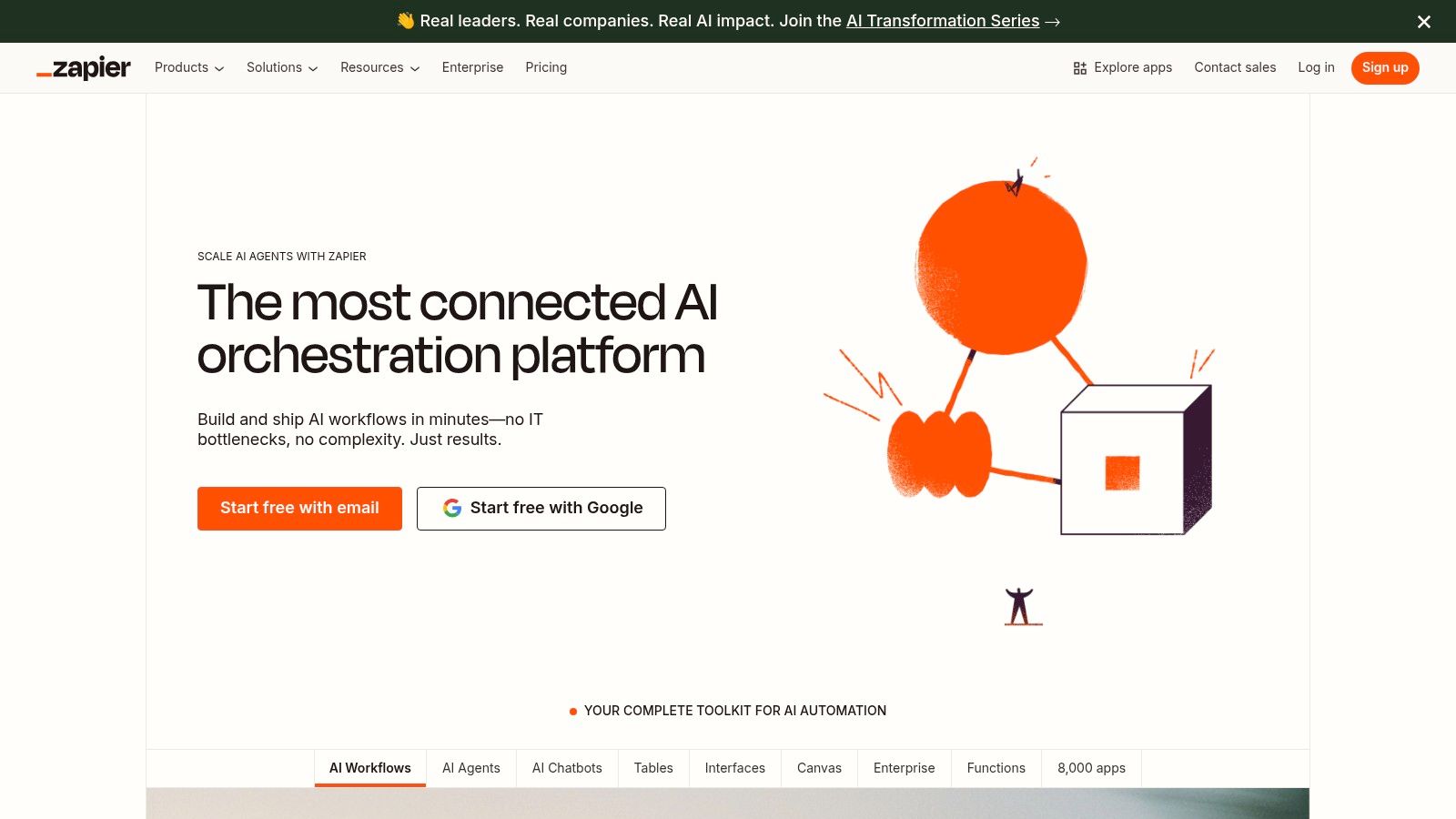
Microsoft Power Automate
For organizations deeply embedded in the Microsoft ecosystem, Power Automate is a compelling choice. It offers seamless integration with Microsoft 365, Dynamics 365, and Azure. This simplifies governance and security for IT departments. It excels with dual capabilities in both cloud-based API automation and on-premise Robotic Process Automation (RPA), making it ideal for hybrid environments. Its licensing can be complex, and its full value is most realized by businesses already invested in Microsoft.
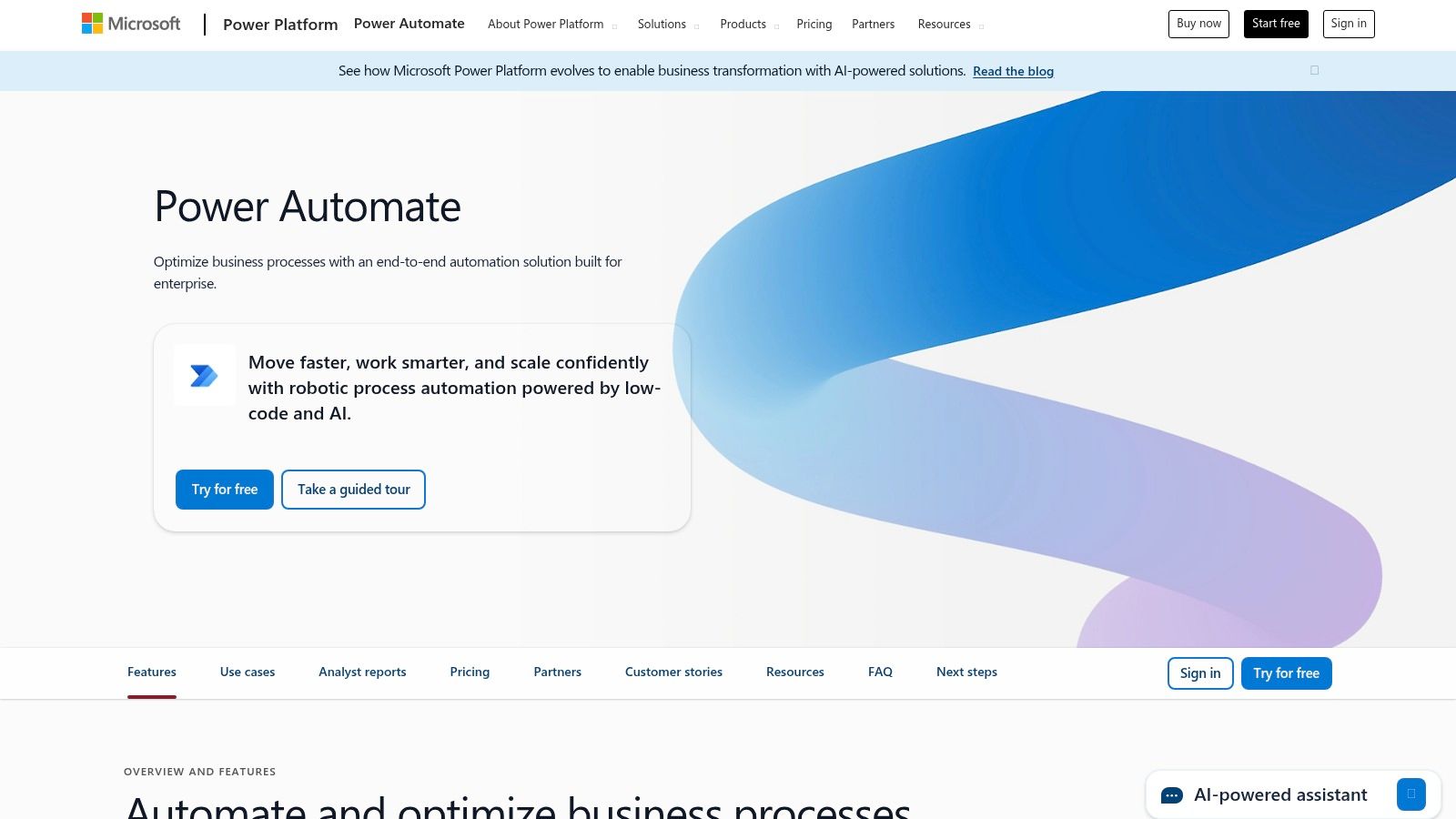
IFTTT
IFTTT, which stands for "If This Then That," focuses on simplicity and the consumer Internet of Things (IoT) ecosystem. It excels at connecting web services and smart devices for personal productivity. Its strength lies in its straightforward, trigger-action model, which makes it incredibly accessible. It is less suited for complex business logic but is perfect for individuals needing simple, device-centric automations.

What are the top Make alternatives for developers?
Developers and technical operators often require more control, flexibility, and extensibility than standard no-code platforms provide. They need tools that can handle custom logic, integrate with internal systems, and offer robust version control. Most people believe open-source means free, but the opposite is often true when you factor in maintenance and hosting costs. However, the control it provides can be invaluable.
n8n
For technical teams seeking full control, n8n stands out as a powerful open-source and source-available alternative. Its node-based workflow editor provides granular control, appealing to developers who want to build custom logic. The platform's core strength is its flexibility, offering both a managed cloud service and a self-hostable Community Edition. This makes it a top contender for those prioritizing extensibility and data sovereignty. Check our analysis of n8n alternatives for more.
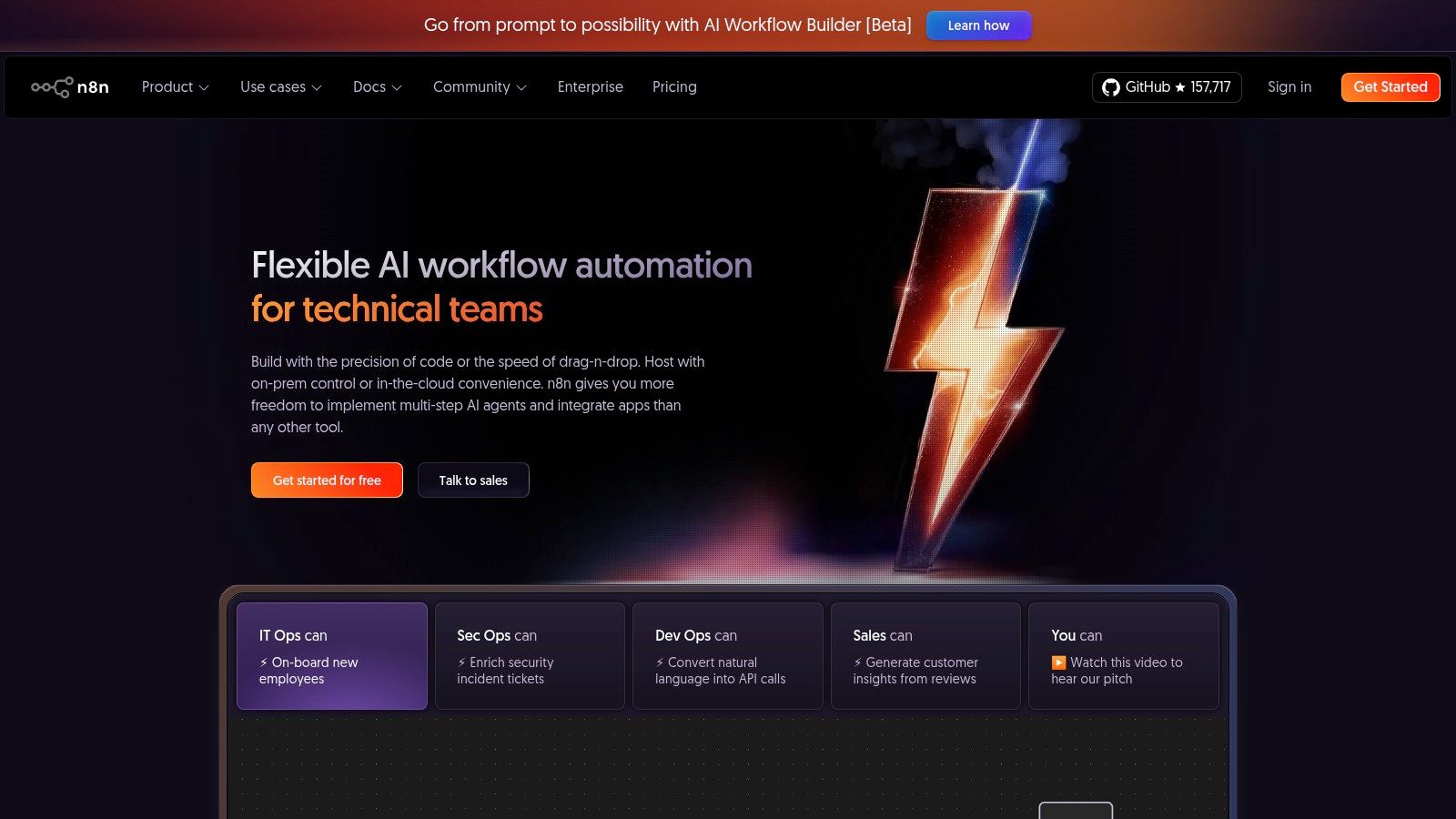
Pipedream
Pipedream is a developer-centric automation platform designed for teams that require custom logic that visual-only builders cannot support. Its core strength lies in allowing users to run JavaScript, Python, Go, and Bash code steps directly within a workflow. This offers nearly limitless flexibility for technical users. It is ideal for engineers who need to build complex integrations or data processing pipelines.
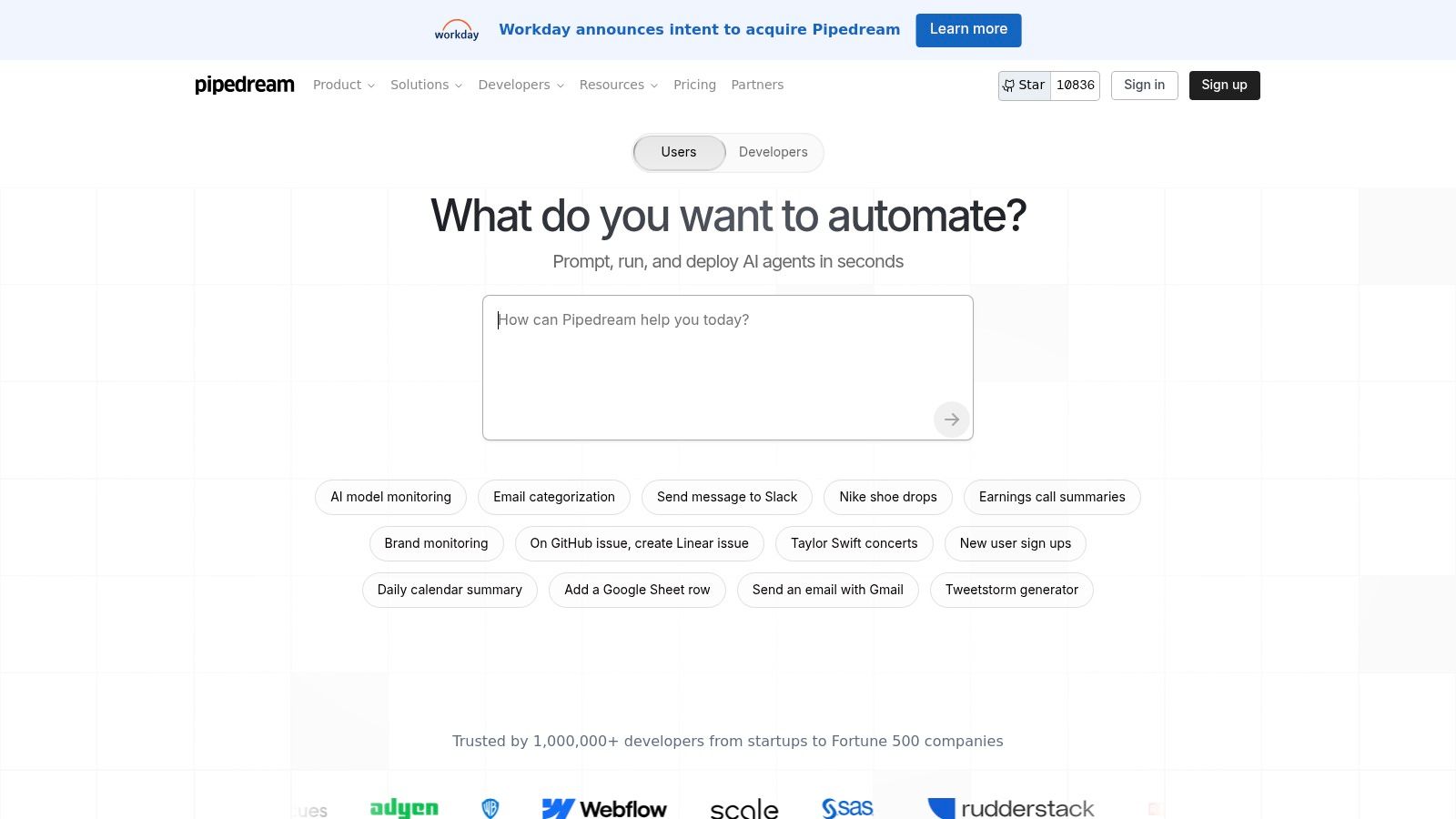
Activepieces
As a modern, open-source contender, Activepieces combines a traditional no-code flow builder with advanced AI features. This dual approach appeals to users who want both the simplicity of visual workflows and the power of emerging AI. It is built for developers who value the transparency and extensibility of open-source software, allowing it to be self-hosted for maximum data privacy.
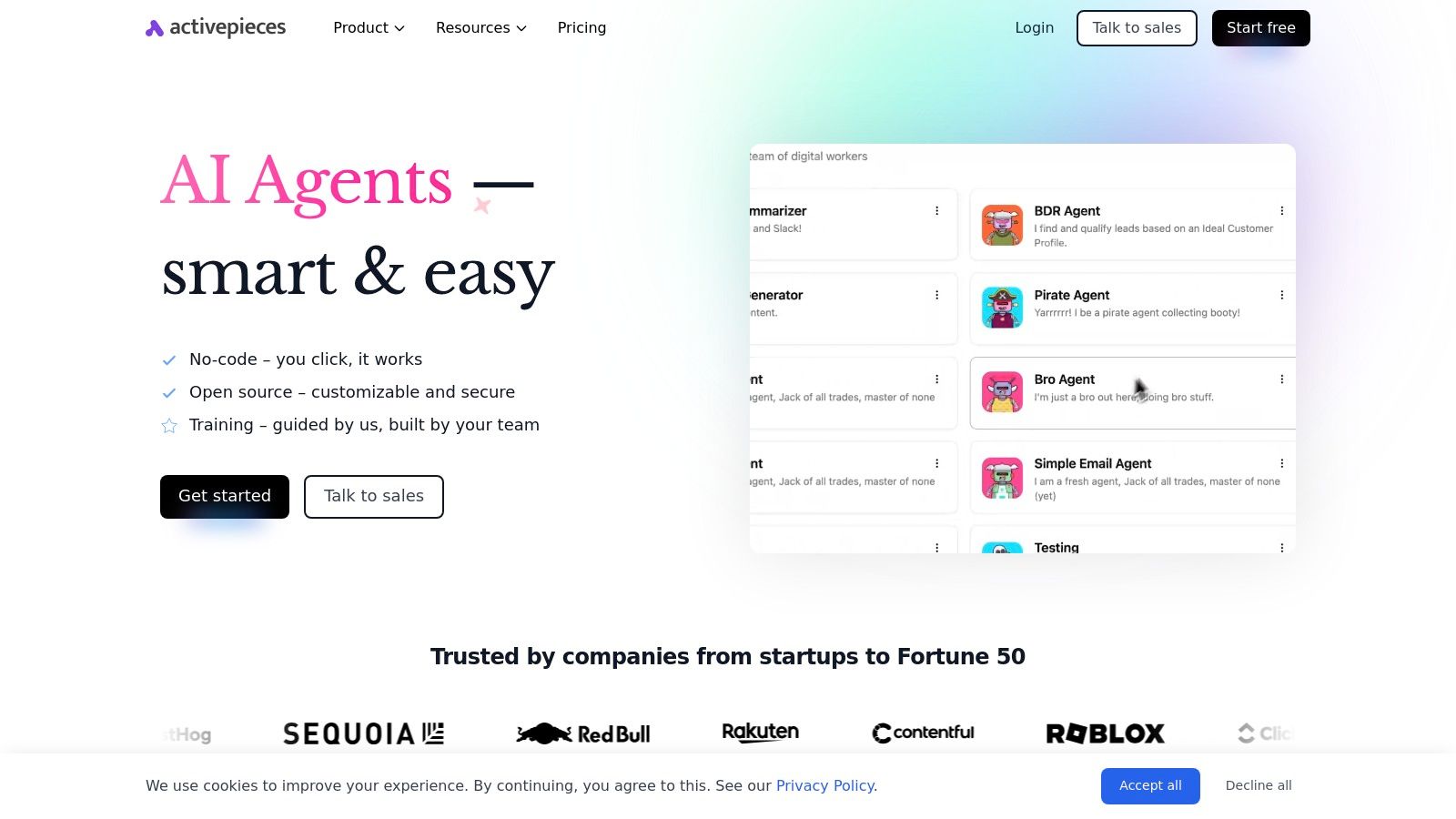
Which platforms are built for enterprise scale?
Enterprise-grade Make alternatives must provide more than just connectors; they need to deliver robust governance, security, and scalability to manage business-critical processes. These platforms are designed for organizations with stringent compliance needs and high-volume data processing.
Workato
Positioned as an enterprise-grade Integration Platform as a Service (iPaaS), Workato moves beyond simple task automation to tackle complex integration challenges. It is a powerful choice for large enterprises that require robust governance and lifecycle management. Its AI-enabled automations and comprehensive audit trails make it a top choice for IT leaders. Pricing is typically negotiated through a sales-led process, reflecting its focus on enterprise-scale needs.
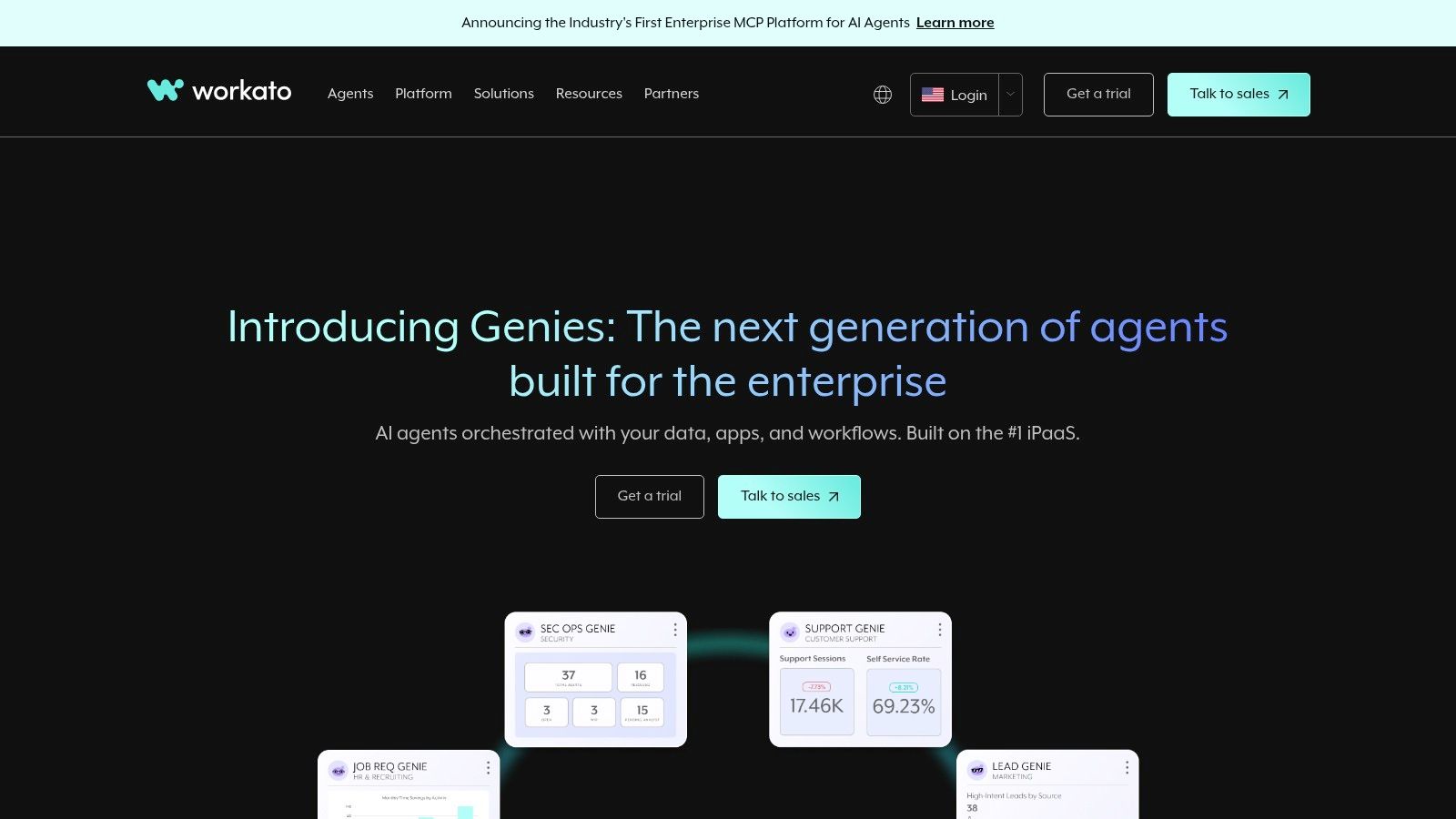
Tray.io
Tray.io is another powerful low-code solution for companies requiring scalable and secure automations. Its key strength lies in balancing a user-friendly interface with the deep technical flexibility needed for sophisticated projects. Features like its Universal Connector, role-based access controls, and environment promotion are ideal for IT teams tasked with deploying mission-critical automations. Its pricing requires a custom quote, reflecting its focus on tailored solutions.
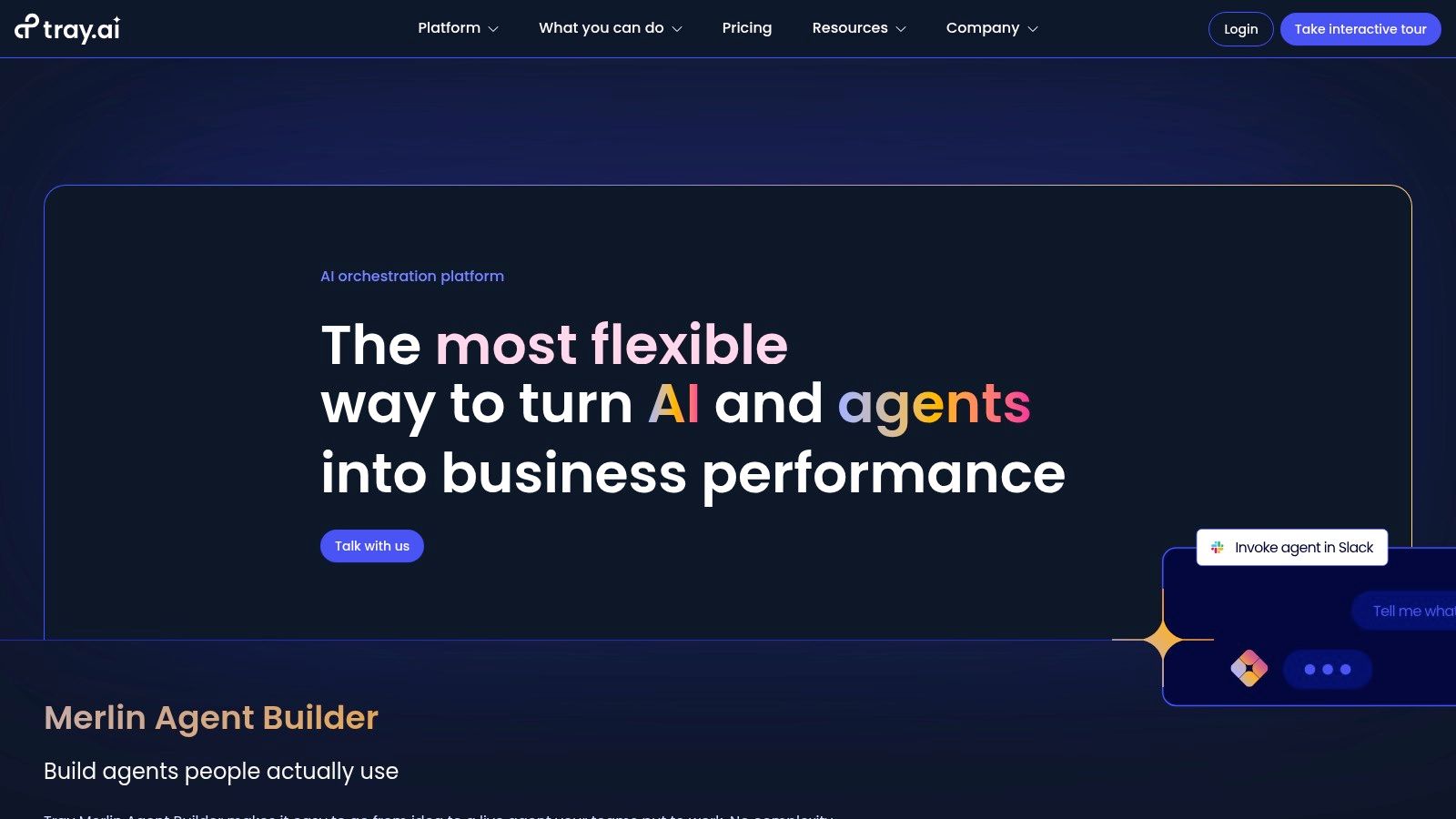
ToolCore ApproachBest ForPricing ModelCodeWordsAI-native chat builderFounders & ops teamsUsage-basedZapierVisual no-code builderSMBs needing fast setupTask-basedn8nOpen-source node editorDevelopers needing controlExecution-based / Self-hostedPipedreamDeveloper-first code stepsEngineers building custom logicCredit-basedWorkatoEnterprise iPaaSLarge enterprisesCustom quoteRelayHuman-in-the-loop workflowsTeams needing manual approvalsStep & AI credit-based
Methodology: Comparison based on publicly available documentation, pricing pages, and user reviews as of Q4 2024. Enterprise pricing is subject to negotiation.
What are some other notable Make alternatives?
Beyond the major players, a number of specialized tools offer unique approaches to automation, catering to specific use cases and team structures.
Integrately
Integrately focuses on simplicity and value, particularly for small to mid-sized businesses. Its primary appeal lies in a vast library of "1-click" ready-to-go automation recipes. Its aggressive pricing model offers a high number of tasks per dollar, making it attractive for businesses running frequent, simple workflows.
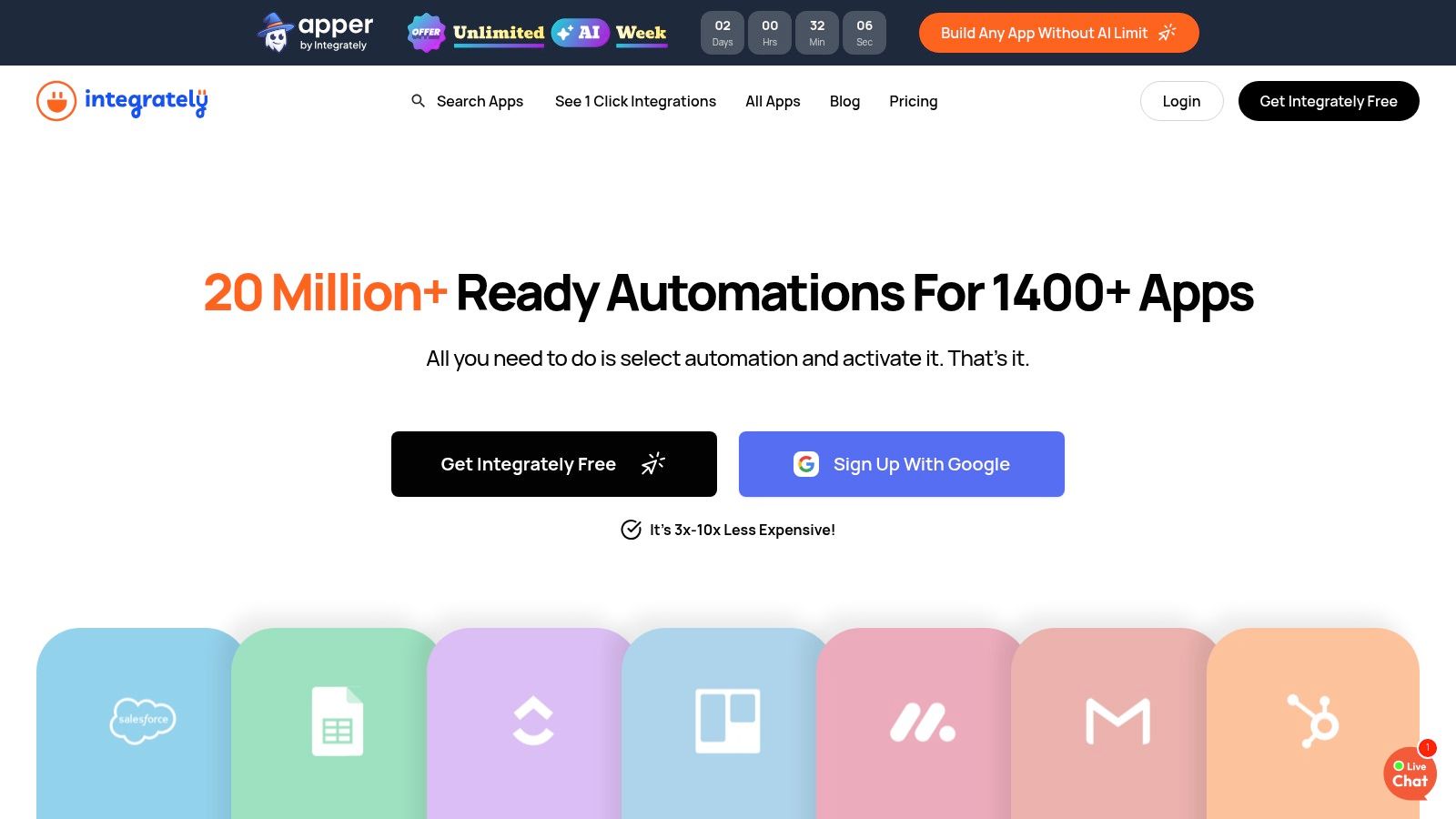
Bardeen
Bardeen positions itself as an AI-first automation tool for go-to-market teams. It excels at browser-based tasks like web scraping and data enrichment. It functions as an agent-like assistant for sales and operations professionals, streamlining outbound prospecting with fast-to-deploy "Playbooks."
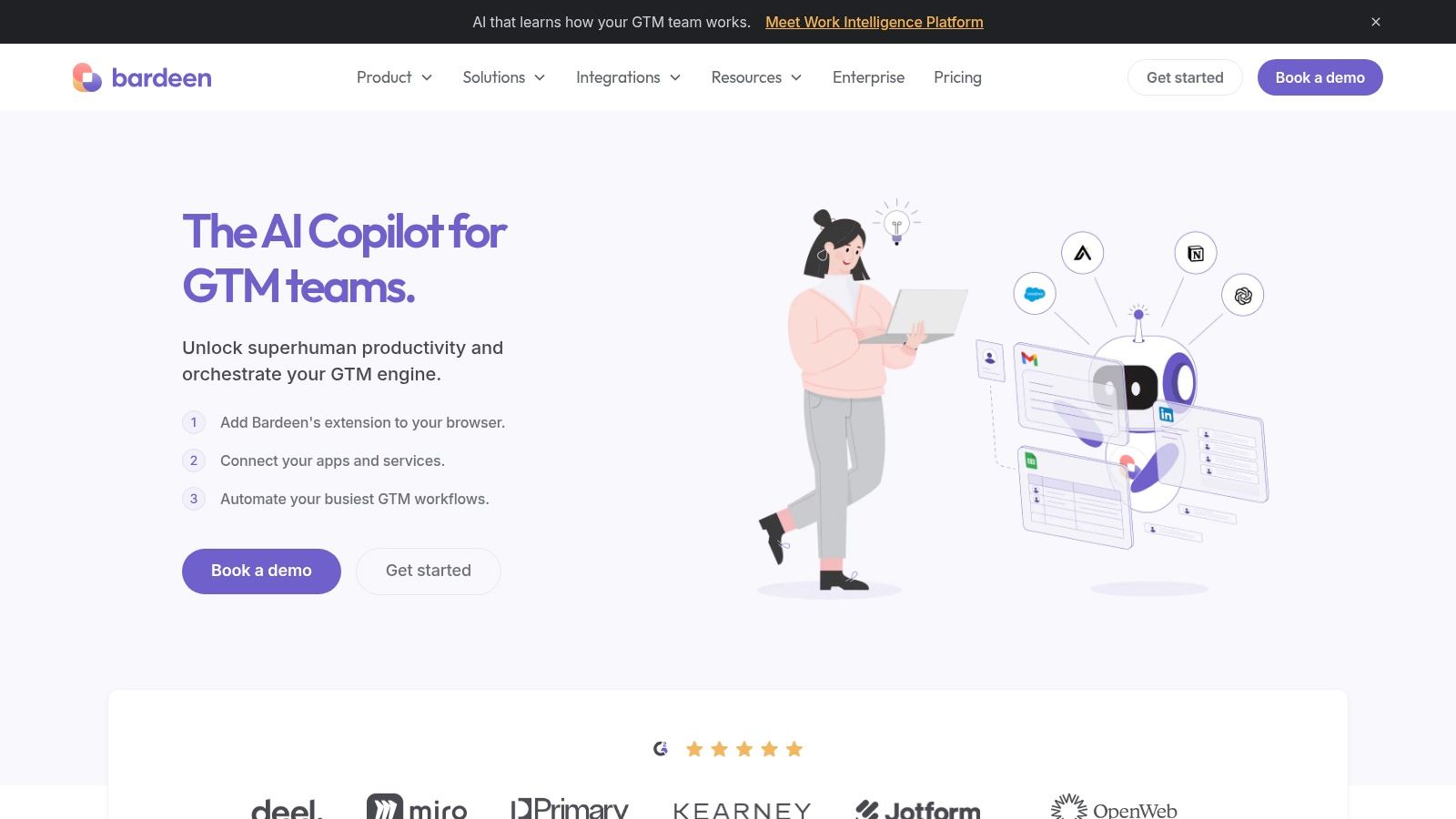
Relay
Relay uniquely blends automated workflows with essential human oversight. It's built for teams that require automated processes but cannot afford to completely remove manual checkpoints, such as approvals. This "human-in-the-loop" approach is ideal for orchestrating complex operations where both machine efficiency and human judgment are critical. For example, Greenhouse reports that using Relay reduces sourcing time by 70% (Q3 2024) by automating initial screening while requiring human approval for final candidates.
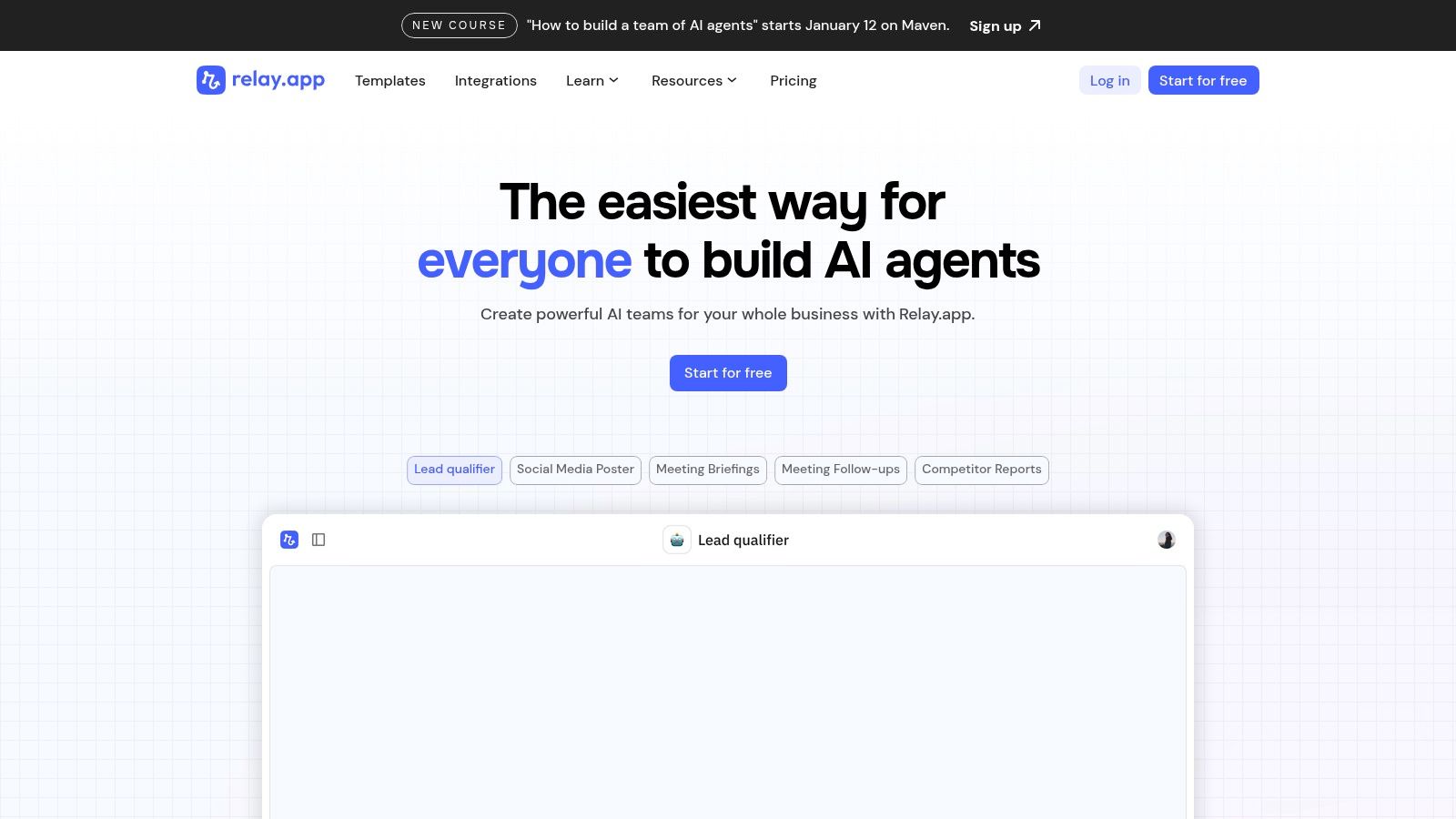
FAQs about Make alternatives
What is the best Make.com alternative for enterprise?
For large enterprises, Workato is a top alternative due to its robust governance, security, and lifecycle management features. Microsoft Power Automate is also a strong contender for organizations heavily invested in the Microsoft ecosystem.
Is there a free alternative to Make?
n8n and Activepieces both offer generous free, self-hostable community editions that provide extensive functionality. CodeWords also offers free starting credits, allowing users to build and run workflows without upfront cost.
What is the difference between Make and Zapier?
Make generally offers more complex logic, routing, and data manipulation capabilities within a single scenario. Zapier prioritizes simplicity and has a larger app marketplace, making it faster for straightforward, linear automations.
From building workflows to composing automations
Choosing your next automation platform is a decision about the language you will use to orchestrate your business's core processes. We have explored a dozen powerful Make alternatives, from visual builders like Zapier to developer-centric platforms like Pipedream. Each tool offers its own syntax for connecting applications. The initial goal for many is just to build a workflow, to connect Point A to Point B. This is functional and immediately useful for simple, known problems.
However, as your operational complexity grows, you need to express novel ideas and handle unexpected exceptions. This is the critical shift from merely building workflows to truly composing automations. Composing implies a deeper fluency — the ability to construct sophisticated logic that adapts and scales. Platforms that blend natural language with the precision of code, like CodeWords, are built for this evolution. They empower you to move beyond basic triggers and into a realm where you can articulate intricate business logic as fluently as you can describe it. Exploring a guide to the best workflow automation software is essential for understanding this broader ecosystem.
This transition fundamentally changes the types of problems you can solve. Instead of just automating a single task, you begin to architect entire systems. The implication is clear: the most impactful automation is not about linking boxes, it is about expressing intent. Your final choice should not be based on what you need to connect today, but on the complexity of the operational ideas you want to express tomorrow.
Start automating now





